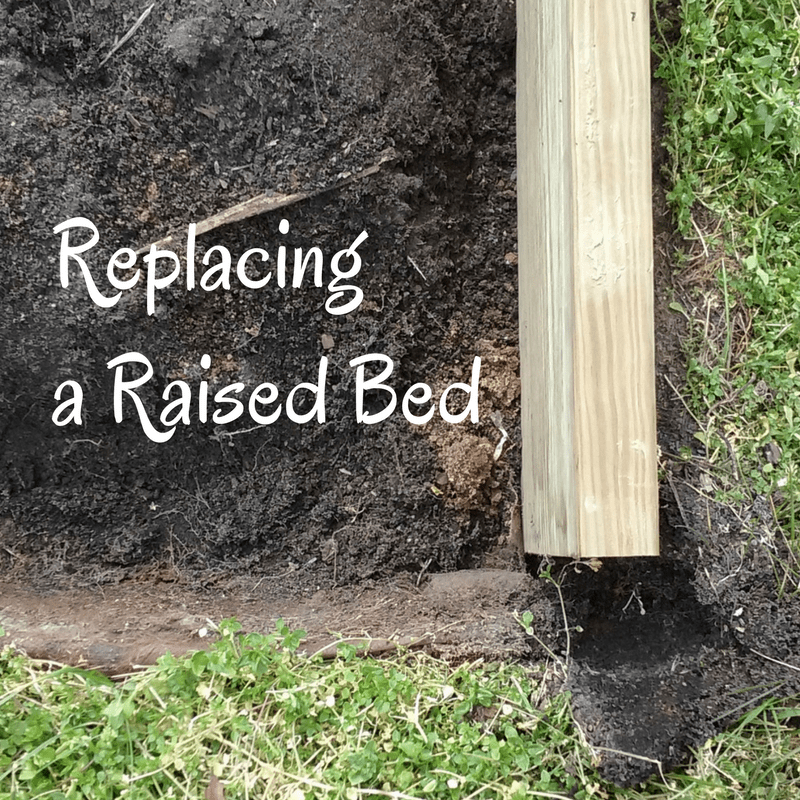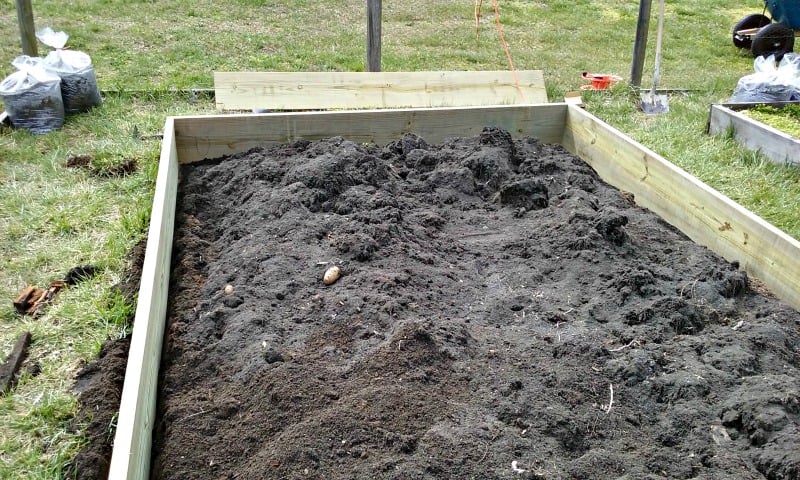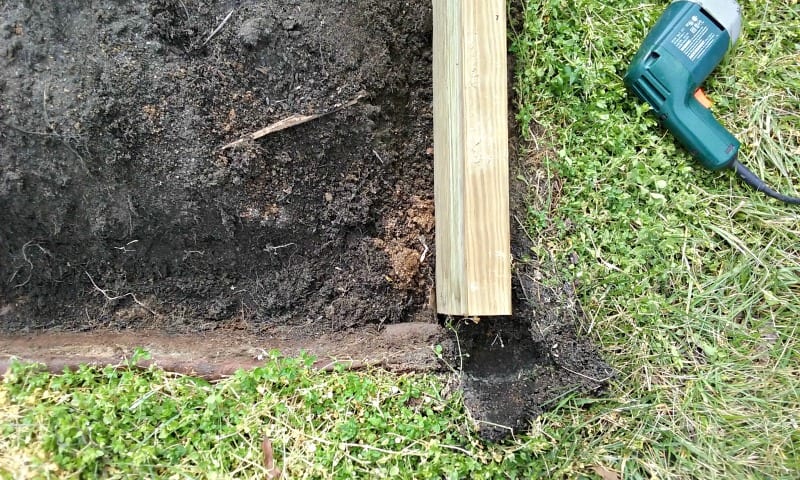This weekend, our project was replacing a raised garden bed. We build the original raised beds about nine years ago. Sun, water, and weathering rotted the boards. They were coming apart at the corners. It was time to replace the raised garden beds.

Replacing a Raised Garden Bed
We built our raised bed vegetable garden nine years ago. Many of the boards have since started to rot and are pulling apart at the corners. We used metal braces drilled and screwed into the corner as a temporary measure, but the rotting wood was crumbling. It was time to replace the raised garden beds.
To replace your raised garden beds, you can use a similar method.
Steps to Replace a Raised Bed Vegetable Garden
The bed we are replacing is 8 feet by 8 feet square and is currently used for potatoes and sweet potatoes.
- Buy the wood you need for the sides of the bed. We use pressure-treated lumber. Not everyone agrees that this is safe in the garden but I believe the research shows that plants placed away from the edges do not absorb any chemicals leached into the soil. You should make your own decision.
- We cut the boards to the proper length. We purchased 12-foot boards and cut them to 8 feet. The extra 4 foot sections will be used to replace other beds in the garden. Our garden contains two 8 x 8 foot beds and 10 beds of 4 x 8 feet.
- Once the boards are cut, carry them to the garden area.
- Using a garden shovel, shovel the existing soil into the center of the garden and away from the edges.
- Begin dismantling the sides of the existing raised bed by unscrewing the bolts or screws holding the wood together.
- Wearing gloves to prevent splinters, pull up the old boards once the screws are out. The boards may split. Pile the pieces up and discard properly in the trash.
- Using a hand trowel and hoe, dig a replacement trench on the edge of your garden where the boards will go.
- Start the screws into one of the boards.
- With a helper, move two boards into place. to form a corner angle.
- Hold at the corner so that the corner aligns.
- Place the screws that you have already started.
- Repeat on each corner. It may be difficult to align the corners perfectly. The closer you align them each time you screw them together, the better.
- Check that the boards are in the trenches you have dug with the hoe in the existing trenches.
- Push the soil back and use a rake to smooth it out.



And there you have it – replacing a raised garden bed. It takes us about 3 hours now from start to finish to tackle the job on a big bed like this. We had to weed it first, push and dig the soil back, remove the old boards, re-dig the trench, and replace the soil. Hopefully, we won’t have to tackle this task again for another 9 or 10 years!
Updated on May 7, 2021 with new links and improved content.




